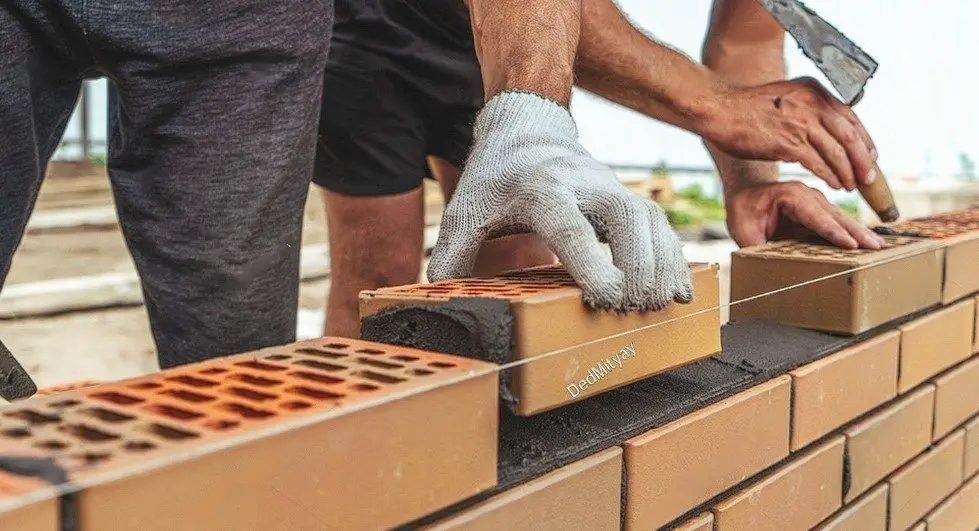Table of Contents
Understanding the Hazards of Brickwork
Brickwork and Blockwork Risk Assessment: Learn how to conduct a proper risk assessment to mitigate the hazards associated with brickwork in construction sites. Identify potential hazards and implement control measures to ensure the safety of workers.
When it comes to construction, brickwork is one of the most popular and widely used building techniques in the industry. However, working with bricks can be dangerous, and it’s important to understand the risks involved and how to mitigate them. In this article, we’ll discuss the different hazards associated with brickwork activity and how to conduct a proper risk assessment to keep workers safe.
See Also: Brickwork Method Statement
Brickwork can be a hazardous activity that can result in serious injuries or even fatalities if proper safety measures are not taken. Here are some of the most common hazards associated with brickwork:
Physical Hazards
- Falling objects: Bricks and other materials can fall from heights and injure workers.
- Manual handling: Lifting and carrying heavy bricks can lead to musculoskeletal disorders, such as back pain or strains.
- Dust and debris: Brick cutting and drilling can create dust and debris that can be hazardous to workers’ health if inhaled.
Chemical Hazards
- Mortar and cement: Exposure to cement and mortar can cause skin irritation, burns, and respiratory problems.
- Silica dust: Silica dust is a byproduct of cutting and drilling bricks, which can cause lung cancer, silicosis, and other respiratory diseases.
The following are some of the hazards and control measures to consider while completing a risk assessment for Brickwork & Blockwork:
Hazards
- Material falls
- Blocks and bricks cutting
- Chronic Obstructive Pulmonary Disease (COPD) is caused by C. Silica Dust.
- Working at a high level
Consequences
- Amputation or severe lacerations.
- Numerous injuries.
- Carbon monoxide from exhaust and petrol vapors from fuel.
- Silicosis (workplace lung disease).
- Cancer of the Lung.
- COPD is an abbreviation for Chronic Obstructive Pulmonary Disease.
- Death or fatality.
- Personnel electrocution and injury.
- Equipment harm.
- Fumes.
- Disorders in ergonomics.
- Hearing Loss.
Control Procedures
Hard helmets and safety shoes that meet BS/EN standards are among the Personal Protective Equipment (PPE) worn by all workers and guests.
When cutting bricks/blocks, respiratory protection equipment and devices with a minimum protection factor of 20 must be worn in accordance with EN149 FFP3.
BS EN 166 impact goggles must be worn during the cutting of bricks or blocks.
All waste materials and or substances must be removed from the working and operational areas to avoid the risk of slip and fall fatalities.
Every circumstance necessitates the usage of the following Personal Protective Equipment (PPE):
- Goggles for eye protection
- Hearing protection is essential.
- Gloves
- When cutting stone, wear a dust mask.
- Footwear for safety

Conducting a Brickwork Risk Assessment
A brickwork risk assessment is a crucial step in identifying hazards and implementing safety measures to mitigate them. Here’s a step-by-step guide on how to conduct a brickwork risk assessment:
Step 1: Identify Hazards
The first step in a risk assessment is to identify potential hazards associated with brickwork. This can include physical hazards, such as falling objects, as well as chemical hazards, such as exposure to cement and silica dust.
Step 2: Evaluate Risks
Once hazards have been identified, the next step is to evaluate the risks associated with them. This involves assessing the likelihood and severity of each hazard and determining the level of risk it poses to workers.
Step 3: Implement Control Measures
After identifying hazards and evaluating risks, the next step is to implement control measures to reduce or eliminate hazards. This can include providing workers with personal protective equipment (PPE), such as respiratory masks or gloves, or implementing engineering controls, such as ventilation systems or barriers to prevent falling objects.
Step 4: Monitor and Review
The final step in a brickwork risk assessment is to monitor and review control measures to ensure they are effective in reducing or eliminating hazards. This can involve regular inspections and testing to ensure that PPE and engineering controls are functioning properly.
Conclusion
Brickwork is a popular building technique, but it can also be hazardous to workers if proper safety measures are not taken. Conducting a brickwork risk assessment is crucial in identifying hazards and implementing control measures to reduce or eliminate them. By following these steps, construction companies can ensure the safety and well-being of their workers.
FAQs
What are brickwork and blockwork risk assessments?
Brickwork risk assessment is the process of identifying potential hazards associated with brickwork and implementing control measures to reduce or eliminate them.
What are the hazards of brickwork?
The hazards of brickwork include falling objects, manual handling, dust and debris, cement and mortar, and silica dust.
What are some control measures for brickwork hazards?
Control measures for brickwork hazards can include providing workers with personal protective equipment (PPE), such as respiratory masks or gloves, or implementing engineering controls, such as ventilation systems or barriers to prevent falling objects.
Why is brickwork risk assessment important?
Brickwork risk assessment is important because it helps identify hazards and implement control measures to ensure the safety and well-being of workers.
Download the File: Brickwork and Blockwork Risk Assessment

